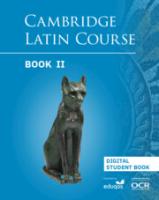
CUP (5th edn., with digital access) 2023) p/b 254pp £19.95 (ISBN 9781009162685)
For a review of Book 1, go to here.
The revision of Book 2 has kept intact its basic structure, with geographical locations the same (Britain in stages 13-16, Alexandria in 17-20) and with all the features of the language introduced in the same order as in the previous edition. Most of the stories are the same as those in the second edition and, although there are differences, most involve minor changes: for example there is a more generous use of colour. More significantly there are new or revised exercises, especially ‘comprehension’ exercises in the ‘practising the language’ sections. There are text boxes, each housing a ‘Thinking point’ or ‘Enquiry’ to stimulate historical investigation and reflection, especially in conjunction with the cultural material which is extensively revised and somewhat expanded.
Stories and cultural information are often partially related by characters, their words enclosed in a yellow line. Translations (e.g. of Dio Chrysostom) are rarely used and enclosed in a blue line. Two female characters new to this edition, Lucia, Quintus’ sister who was introduced in Book 1, and Catia as the wife of King Togidubnus (yes, no more King Congidubnus!). Catia is a name taken from RIB95, the tombstone of Catia Censorin(a) or Censorin(i) aged 23 or 24. It is well illustrated on p. 53. In the book she is depicted as somewhat older than stated on her tombstone and this might stimulate discussion of interpretation of both inscription and carving on the stone. Lucia is given more prominence and we learn she is a friend of Helena, Aristo’s daughter, in stage19. On p.93 in the introductory sentences to stage 17 Quintus is reunited with his sister Lucia. Gone is the mention of the many slaves owned by Barbillus, especially the young Egyptian slave boy whose death was so affecting. The varied characters and places ( in the story of Volubilis especially p. 152) convey the cosmopolitan nature of the Roman empire, but perhaps slavery should be given more prominence, especially when opposite ends of the empire are the focal points of this part of the course. Some attention has been paid to cultures beyond the empire. For example in the time chart on p.v there are columns for Britain, Egypt and Alexandria, The Roman World, and The Wider World. In the Alexandria section on p.111, the opportunity is not missed to present details of trade with the Far East, especially China.
As in Book 1, there is considerable help available online and on the back of the front cover are instructions for access to the online resources. A useful index of cultural topics concludes the reference section, which contains extensive language information, vocabulary and in ‘Reviewing the language part 2’ exercises (of the ‘complete and translate’ variety) arranged by stage.
This new edition embraces all the virtues of the Cambridge Latin Course and offers some embellishment too. It is endorsed by both eduqas and OCR and it should be a welcome update for those using or intending to use the Cambridge Latin Course.
Alan Beale
